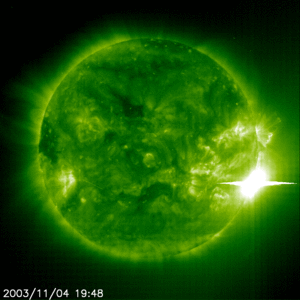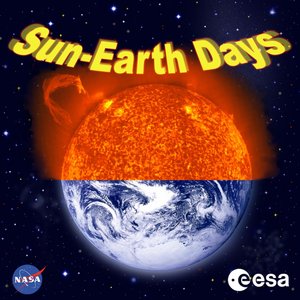European expertise helps to view the Sun in a new way
European experts have played an integral role in developing and building the instruments on NASA’s STEREO spacecraft. This exciting new solar mission will allow scientists to build on the work of the ESA/NASA SOlar and Heliospheric Observatory (SOHO) mission.
The STEREO mission consists of a pair of spacecraft that will separate after launch and move apart. This will allow them to look at the Sun simultaneously from different angles.
STEREO’s mission is focused on the study of extraordinary solar events known as Coronal Mass Ejections (CMEs). “A CME is a part of the solar atmosphere that has been blown off by a huge explosion. The CMEs are the link between the Sun and space weather,” says Richard Marsden of ESA, and a co-investigator on STEREO’s IMPACT instrument.
Space weather affects the Earth by producing the colourful aurorae. It can also be a hazard to satellites, in some cases destroying them by causing electrical short circuits. SOHO, a multi-faceted solar observatory that revolutionised our understanding of the Sun, began the detailed study of CMEs using an instrument called LASCO.

STEREO will build on the work of SOHO by tracking CMEs from the surface of the Sun to their impact with the Earth. In addition, having two viewpoints with STEREO allows scientists to construct quasi-three dimensional images known as stereoscopic images. “Even with two viewpoints, you won’t get the full story. If you want a full three-dimensional reconstruction of a structure, you need as many viewpoints as possible,” says Marsden.
That’s where SOHO comes in. The 11-year-old spacecraft will provide a third viewpoint that scientists can integrate with the STEREO data in order to gain an even more complete picture of the structure of each individual CME.
At the heart of STEREO lie four scientific instrument packages; all have been designed and built with European participation. The Sun Earth Connection Coronal and Heliospheric Investigation (SECCHI) is a suite of instruments that will chart the evolution of solar eruptions.
The STEREO/WAVES (SWAVES) instrument will track radio disturbances from the Sun to the orbit of Earth. Dr. J-L Bougeret, Observatoire de Paris-Meudon, is the principal investigator of this instrument.

The In-situ Measurements of Particles And CME Transients (IMPACT) experiment will sample energetic particles released by the Sun and monitor changes in the magnetic field of space caused by the solar disturbances. Parts of IMPACT were built at ESA’s European Science and Technology Research Centre (ESTEC) in The Netherlands.
The PLAsma and SupraThermal Ion Composition (PLASTIC) experiment will provide key measurements of the particles that make up CMEs, looking for differences between these and the electrically charged gas that the Sun emits all the time.
At ESA, Marsden is now working on the design of a new mission, called Solar Orbiter. Planned for launch around 2015, this spacecraft will travel closer to the Sun than any previous mission, giving scientists their first really close up look at the solar surface and the poles of the Sun.















 Germany
Germany
 Austria
Austria
 Belgium
Belgium
 Denmark
Denmark
 Spain
Spain
 Estonia
Estonia
 Finland
Finland
 France
France
 Greece
Greece
 Hungary
Hungary
 Ireland
Ireland
 Italy
Italy
 Luxembourg
Luxembourg
 Norway
Norway
 The Netherlands
The Netherlands
 Poland
Poland
 Portugal
Portugal
 Czechia
Czechia
 Romania
Romania
 United Kingdom
United Kingdom
 Slovenia
Slovenia
 Sweden
Sweden
 Switzerland
Switzerland
































